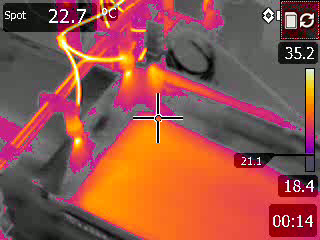Improving efficacy of spray vaccinations

Almost every hatchery uses spray vaccinations to administer a wide range of vaccines, however efficacy is not always optimal due to suboptimal conditions. Innovative vaccines, new equipment technologies and professional services are the combination for success in improving efficacy of spray vaccinations.
By Carlos Gonzalez and William Boyer, Ceva Sante Animale, France
Day-old-chick spray vaccination in the hatchery is one of the most common vaccination practices performed worldwide. This vaccination method has been selected for the mass administration of vaccines against Newcastle disease (ND) and Infectious Bronchitis (IB) in the hatcheries, as it triggers local immunity in the upper respiratory tract and also stimulates general humoral immune response. The principle consists of bringing a live vaccine virus with tissue tropism for the respiratory system (ND, IB) in contact with the sinus and tracheal mucous membranes and the Harderian gland through microscopic droplets. Such stimulation will induce a local immunity based on immunoglobulins A (IgA) and cells.
Additionally, coccidiosis vaccines are designed to be applied via spray, in larger drops, in order to have them settled down over the chicks. Today, new technology gel coccidiosis vaccines show a better vaccination coverage and efficacy when applied by a gel dispenser as they optimise ingestion.
Key variables
Needless to say that each type of vaccine will demand specific spray characteristics (droplet size, distribution pattern, targeted tissue, etc.). If these conditions are not adequate for the type of the vaccine applied, obviously, the vaccination efficacy will drop. The initial droplet size is determined by the type of nozzle and the pressure used. However, this size greatly varies from the droplet’s size upon impact, as the droplet’s diameter greatly decreases by evaporation from the nozzle up to the nostrils of the chicks.
The smaller the droplets, the further they will go into the respiratory tract, therefore, the greater the immune stimulation, but also the risk of Post-Vaccine Reactions (PVR), especially with less attenuated vaccine strains. Upon contact, droplets larger than 3μm in diameter (coarse nebulisation) will settle in the upper respiratory tract, which is desired for an initial vaccination against IB and ND. Droplets of approximately 1μm (fine nebulisation) will penetrate down to the lower trachea, the primary bronchi and the lungs, while smaller droplets (0.1μm) will reach the posterior air sacs.
For vaccines with respiratory tropism, there should be the fewest possible droplets of very small size as they will either evaporate in a dry atmosphere or go too far into the respiratory tract. There should also be the fewest possible large droplets as they will fall directly on the floor before being inhaled or they will not penetrate far enough in the respiratory tract. It is desirable to have the most homogeneous droplet size around 150–170μm at emission site (nozzle) so as to obtain 3μm droplets upon contact with the chicks that are about twenty centimetres from the nozzle.
The combination of the appropriated equipment, regular and professional routine quality control actions to monitor the application, and the best innovative vaccines is a must for ensuring a good spray vaccination quality and, therefore, a good immunisation of the chicks.
Choosing the right equipment
You can use the most effective vaccine; but it is worth nothing if it is not applied correctly. Among all coarse spray devices, three different categories are available: knapsack sprayers, semi-automatic sprayers and in-line sprayers. The question is: how to make the right choice?
Knapsack sprayers are the most popular sprayers around the world, due to their low price and easy operation. These sprayers are composed of a vaccine tank carried by the operator and a spray-extension with nozzles. Usually, with these systems, it is difficult to guarantee that each bird has received the right vaccine dose. Some knapsacks contain special components to keep key parameters under control. Nevertheless, hand sprayers are only appropriate for low production volumes.
The semi-automatic sprayers are more convenient for medium production volumes. This equipment is usually designed as a standalone unit with a vaccine tank, pneumatic components, air pressure and spray vaccine systems. It is recommended to select a device with an integrated protection cabinet, to protect the spray from air drifts. The impact of environmental factors like humidity level, atmosphere pressure, etc, on spray quality should not be underestimated. In general, the spray quality is uniform between each crate. However, semi-automatic sprayer
operation is really time consuming. It takes time for the operator to correctly manipulate the crate. Semi-automatic sprayers are consequently not adapted for large volumes or high labour cost scenarios.
Automatic in-line sprayers have been specially developed for the needs of large volumes or high labour cost scenarios. The sprayer unit is integrated within the day-old chicks’ processing conveyor. High vaccination efficacy can be reached in terms of quality and homogeneity. The installation of such equipment could require conveyor engineering. Normally each crate is stopped for a few seconds while vaccination is performed. The use of this technology, allows the spray vaccination to reach a higher vaccination efficacy than ever.
A spray distribution study using thermal-camera shows perfect crate coverage and uniformity when compared to traditional semi-automatic sprayers.
Special care must be taken regarding the cleaning and disinfecting processes for all groups of sprayers. As water is the basis of spray vaccines, it is as well one of the most important contamination vectors. Choosing the right equipment depends on your operational needs. Exploring all is recommended. Focusing on equipment speed is not wise as the main purpose of these devices should be to perform high quality and high efficacy vaccination. Vaccination homogen-eity, consistency and equipment reliability should be the first priority.













